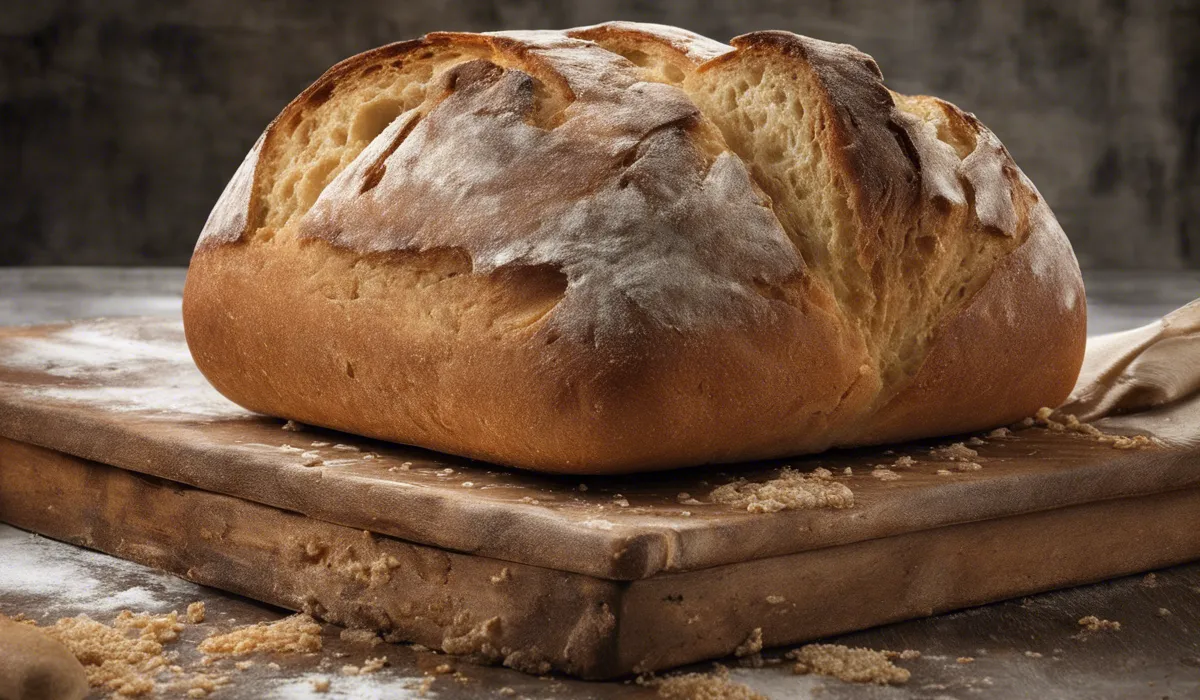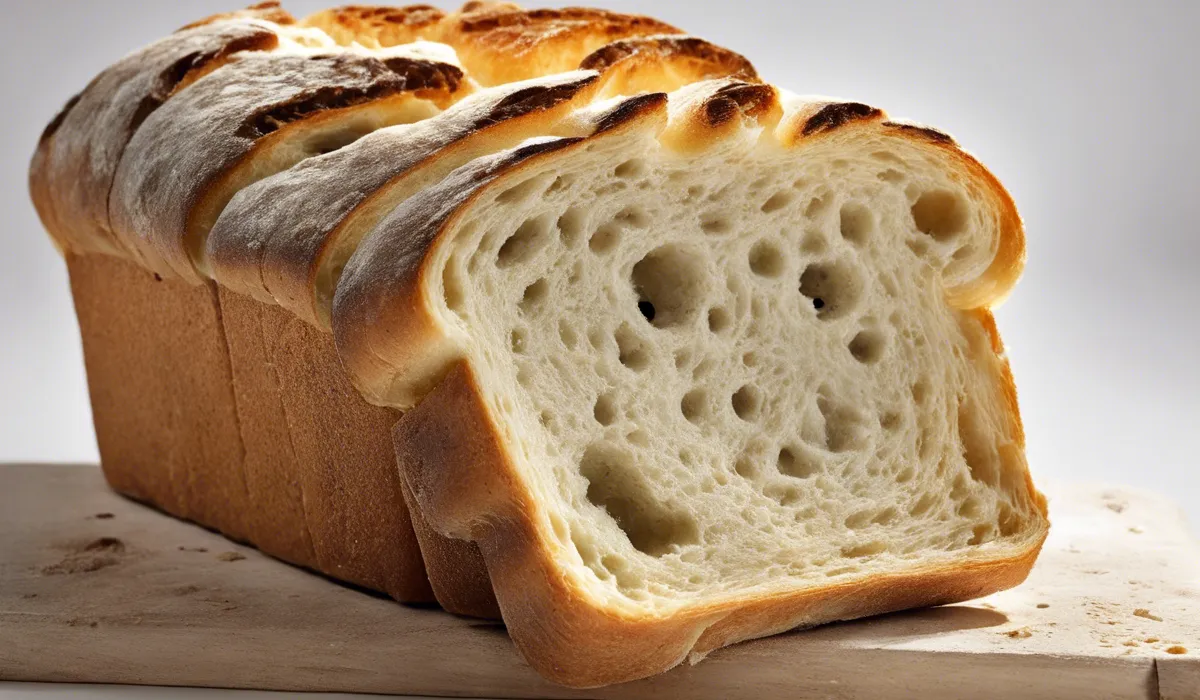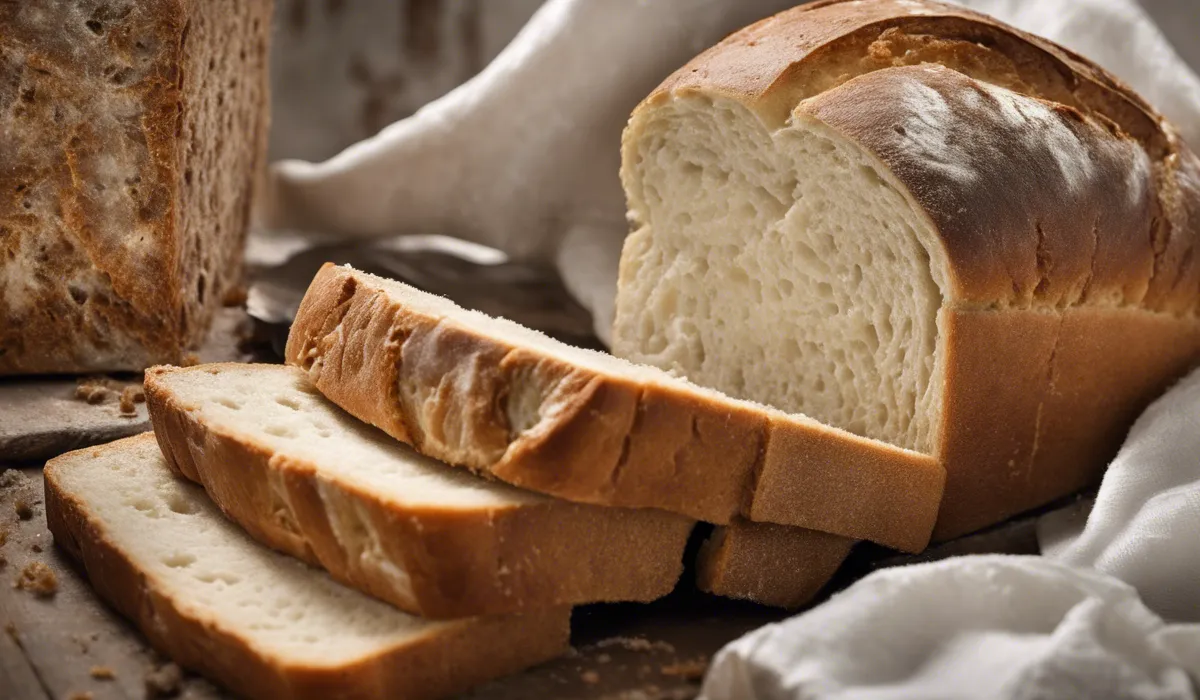Bread mold refers to a type of fungus that grows on bread, appearing as fuzzy, colorful spots. Common types include Penicillium and Rhizopus stolonifer. It thrives in moist, warm conditions and can cause spoilage, rendering bread inedible.
Understanding Bread Mold: The Basics

What Exactly Is Bread Mold?
Bread mold is a type of fungus that shows up as fuzzy spots of various colors on bread. These spots are colonies of mold, made up of thousands of tiny organisms which belong to the same family as mushrooms.
Mold can grow on many different foods, but bread provides an ideal environment for it.
Common Types of Mold on Bread
While there are thousands of mold species, only a few commonly invade our bread. Penicillium, a blue or green mold, is often seen on stale bread.
Another frequent visitor is Rhizopus stolonifer, which appears as black or dark blue spots. These molds not only make bread look unappetizing but also can cause it to smell and taste bad.
The Lifecycle of Mold
Mold grows from tiny spores that float in the air. When a spore lands on a damp, warm piece of bread, it can start to grow.
It uses the bread to feed itself, spreading out its thread-like cells called hyphae. As the mold colony grows, it eventually produces more spores, which can spread to other foods or surfaces.
Conditions That Encourage Mold Growth
Mold loves to grow in warm, moist environments. This is why bread stored in a warm kitchen or in a sealed plastic bag often molds quickly.
The lack of airflow and high humidity creates a perfect mold breeding ground. Bread with higher water content or that is kept in dark places can also become moldy faster.
Health Implications of Consuming Moldy Bread

Risks of Eating Bread with Mold
Moldy bread can be harmful to eat. Some molds produce chemicals called mycotoxins, which can be toxic to humans and animals.
Eating moldy bread could cause stomach aches, nausea, and even more severe health issues, especially if the person has a weak immune system.
What Are Mycotoxins?
Mycotoxins are toxins produced by certain molds that can be dangerous if ingested. These toxins can survive heat and might not be destroyed during cooking.
Some common mycotoxins found in moldy bread include aflatoxins and ochratoxins, which have been linked to various health problems.
Allergies and Respiratory Problems
For some people, mold can cause allergic reactions, such as sneezing, itching, and runny nose.
Inhaling mold spores from moldy bread can lead to respiratory issues, particularly in those with asthma or other breathing problems. It is essential to handle moldy bread carefully to avoid inhaling the spores.
To Cut or Not to Cut Moldy Bread
When you see a small spot of mold on a loaf of bread, it might be tempting to just cut it off and eat the rest.
However, mold’s roots can penetrate deep into the bread, beyond what you can see. It is usually safer to throw away the entire piece of moldy bread to avoid potential health risks.
Prevention and Handling of Bread Mold

Storing Bread to Prevent Mold
To keep bread from molding, store it in a cool, dry place and use a breadbox or ventilated bag to allow airflow.
If you will not eat the bread soon, freezing it can keep it fresh until you are ready to use it. Remember to seal it well to prevent freezer burn and to thaw it properly when needed.
The Role of Preservatives
Many commercial breads contain preservatives that help prevent mold growth and extend shelf life.
These preservatives, like calcium propionate, work by inhibiting the growth of mold spores. However, some people prefer bread without preservatives for health or dietary reasons.
Handling Moldy Bread Safely
If you find mold on bread, handle it with care. Avoid sniffing it or touching it with bare hands.
Use gloves or a bag to cover your hand when disposing of it, and clean any surfaces the moldy bread may have touched. This helps prevent mold spores from spreading.
Disposal and Alternative Uses
Most often, the best choice is to throw moldy bread in the garbage. In some cases, you can compost it, but this should be done with caution to avoid spreading mold spores in your garden.
As for alternative uses, there are no safe options for using moldy bread, even in recipes or as animal feed, because of the potential health risks.
FAQs About Bread Mold
What is bread mold?
Bread mold is a type of fungus that grows on bread in the form of fuzzy, colorful spots, commonly caused by species such as Penicillium and Rhizopus stolonifer.
What are common types of bread mold?
Common types of bread mold include Penicillium and Rhizopus stolonifer.
What conditions do bread molds thrive in?
Bread molds thrive in moist, warm conditions, which are conducive to their growth and reproduction.
Can you eat bread with mold on it?
No, you should not eat bread with mold on it as it can cause food spoilage and may be harmful to your health.
How can you prevent bread mold?
To prevent bread mold, store bread in a dry, cool environment and consume it before it reaches the end of its shelf life.
Final Thoughts
Bread mold is a fungal growth, with Penicillium and Rhizopus stolonifer being common culprits, that manifests as colorful, fuzzy spots on bread.
It favors warm, humid environments and can spoil bread, making it unsafe for consumption.
